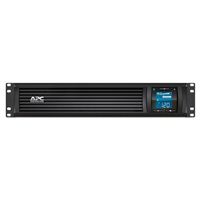Breadcrumbs
- Selected Refinements:
- Surge Suppressors, UPS Systemsx
- UPS Systemsx
- 1500 VA and greaterx
- 10 Minutesx
- 900 to 1200 Wattsx
Special Offers / Advertisements
Compare up to 4 items
New list of matching products
X
Sorry, you may compare a maximum of 4 items at a time.
Please clear one or more of your compare items before adding another-
SKU: 769836
- 1500 VA, 900 W, 120 V
- 6 Outlets
- 2U Rack Mountable
- Automatic Voltage Regulation
- 3-Year & $150K Warranty
- 1500 VA, 900 W, 120 V
- 6 Outlets
- 2U Rack Mountable
Usually ships in 5-7 business days.Our price $799.99
Special Offers / Advertisements
{
'name': 'Smart Connect UPS (SMC1500-2UC)',
'id': '506629',
'price': '799.99',
'brand': 'APC',
'category': 'UPS Systems|566',
'list': 'Search Results',
'position': 1
}

